By SALIM AND SULTAN SOMANI
The authors, Salim and Sultan Somani, acknowledge with thanks Nizar Adatia and Sultan Allidina for their valuable feedback and contribution to this article.
Introduction
This brief essay on the history of the Jamat of Jinja was prompted largely by some historical photos found in our family album and also by other photos that we encountered on the internet. Over the years we have shared these photos with friends and family from Jinja. But there are many others with whom we never had the chance to meet in person or through social media to share these remembrances. As we grow older, memories fade and people pass away, carrying with them some of the past history that the young and upcoming generation never get a chance to know about and appreciate. There are many who have no inkling of what their parents and grandparents went through, growing up in Africa, the trials and tribulations they encountered and the challenges they faced.
Rather than let these photos sleep in our albums, we have decided to give them exposure through this website, Simerg, and talk a little bit about them in the hope that they will trigger some memories and invite contributions to make this essay more complete. This essay has some gaps and missing information and is, by no means, exhaustive. Simerg, which is the repository of historical facts, findings and accounts, is, we believe, the right forum for this exposé.
These photos belonged to our beloved father, Gulamali Kara Somani, who was a great teacher and a volunteer. It is to him that we dedicate this essay and honor his memory. Towards the end of this essay, we have paid him a tribute for his outstanding and exemplary contributions to the Jinja Jamat and the role that he played in shaping and impacting the lives of all those whom he taught and worked with.
Jinja in Brief
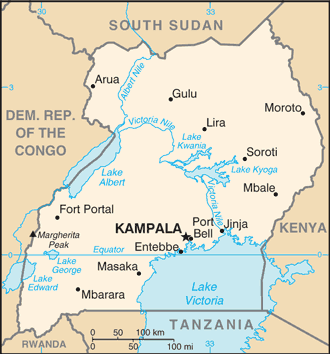
Situated on the shores of Lake Victoria (the third largest lake in the world), where the River Nile (the longest river in the world) leaves the lake to make its long, meandering 4000 mile journey up north to the Mediterranean Sea, Jinja had the second largest Jamat in Uganda, after the Jamat of Kampala, some 50 miles away. This is going back some 70 years, to the fifties and sixties before the 1972 crisis when the dictator Idi Amin expelled everybody of Asian origin as well as many expatriates.
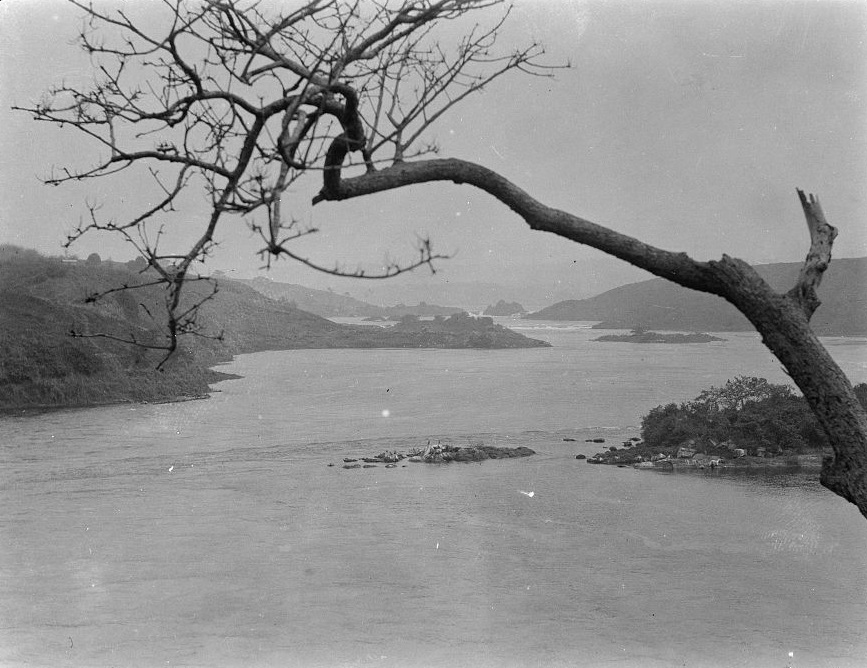
On the banks of the River Nile in Rippon Village was a huge rock which was a drop off or pick up point for travellers crossing the Nile. Jinja literally means a stone or rock and this is how the city derived its name. John Hanning Speke, a British explorer, discovered Jinja as the source of the River Nile in 1858.
First Indian Settlers in Jinja
The early 1900s saw the arrival of the first Indian settlers to Jinja. This is best described in the facebook post by Jinja City:
“Indians first settled in Jinja in the early 1900s. During the late 19th century, Indians of mostly Sikh descent were brought to Uganda on three-year contracts, with the aid of Imperial British contractor Alibhai Mulla Jeevanjee, to build the Uganda Railway from Mombasa to Kisumu by 1901, to Jinja by 1920 and to Kampala by 1931. Some died, others returned to India after the end of their contracts, and others chose to settle.
“Hajji Tamachi was the first Indian settler in Jinja. He set up Jinja’s first shop and Post Office. Hajji Tamachi played a vital role in encouraging other Indians to settle and do business in Jinja. Other Indians followed suite, with Alidina Visram, Vithaldas and Kalidas also setting up shop. Vithaldas and Kalidas, Madhvani’s uncles, helped to tutor Madhvani in business. Madhavani would later single handedly transform Jinja.”
With the building of the railway and much later in 1954, the Owen Falls Dam for generation of hydro-electric power, the Indian population grew with more of them setting up shop. Different communities lived side by side in peace and harmony, doing business and providing services in their respective fields of expertise and professions. Schools were built and so were places of prayer and worship. The Hindus had their temple, the Sikhs their Gurudhwara, the Ithnasharis their Masjid and, in 1937, the Ismaili Jamatkhana was built.
Ismaili Jamatkhana in Jinja
In 1937, on March 01, thanks to the generosity of Varasianima Virbai, widow of late Mr. Ali Bandali, the Jamatkhana, school, library, traveller’s residence (or musafar khana) etc. were constructed at a cost of 25,000 shillings, for the benefit of Ismailis of Jinja. The project was dedicated to Mawlana Sultan Mahomed Shah Aga Khan (A.S.).
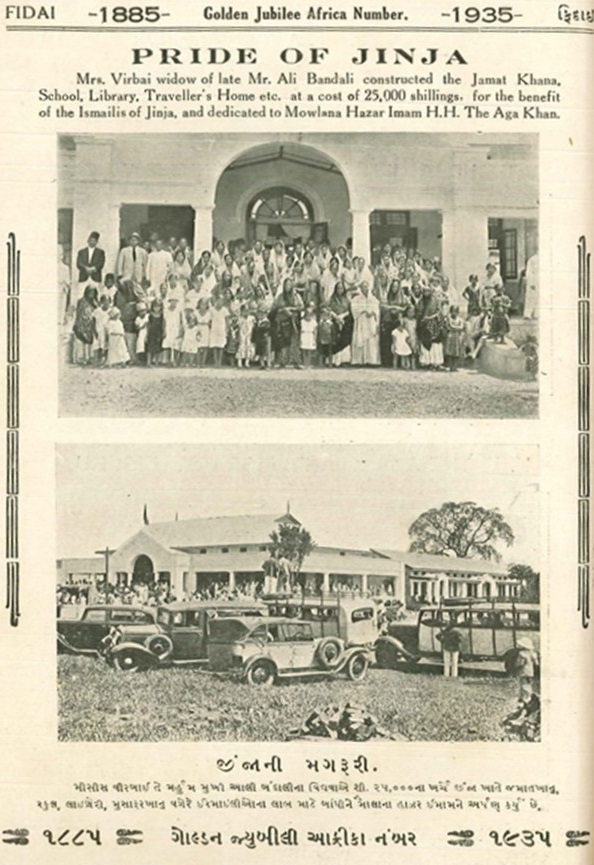
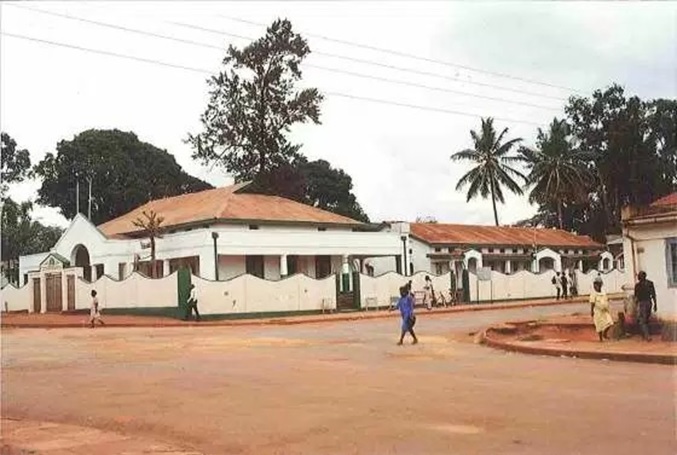
A photo of the Jamatkhana taken much later shows a wall built around the perimeter of the building to make it more secure and private. Land was also acquired for sports activities and to hold Imamat Day, Salgirah and Navroz festivities (generally referred to as Khushialis), as well as other special events.
Another new building was built to house the Council Chamber and the Council Office with some space allocated for activities such as baby shows, cooking demonstrations, exhibitions and other social events etc. The foundation stone of the building was laid by Mukhi Gulamhussein Karim. Mukhi Karim was a prominent and affluent member of the Jamat who served in key leadership positions and commanded lot of respect from members of the Jamat.
Religious Education Classes in Jinja
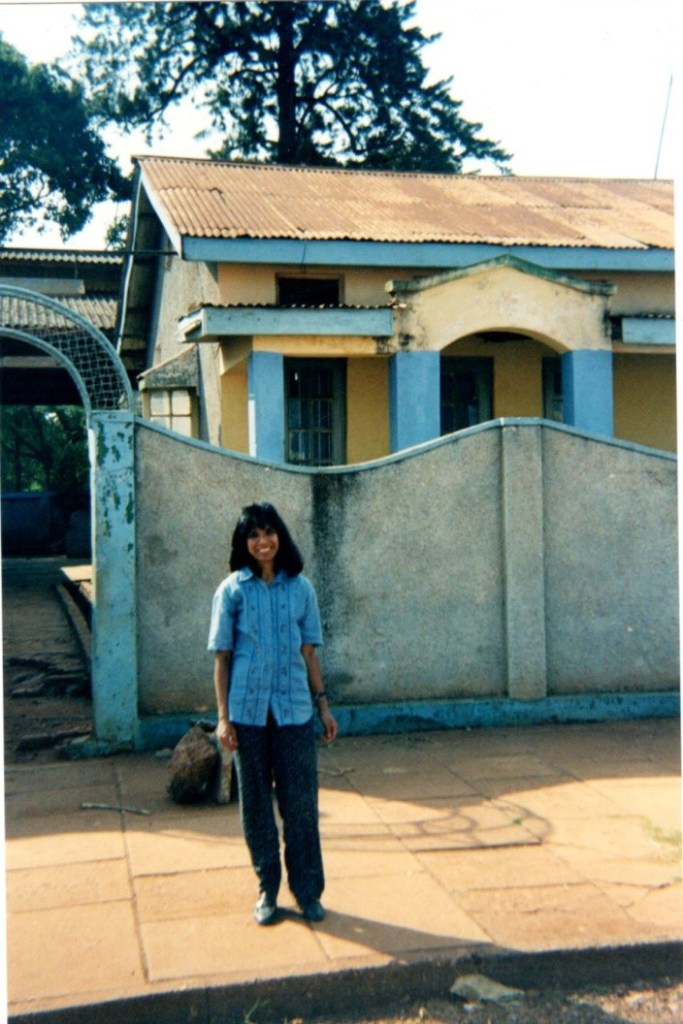
Adjacent to the Jamatkhana building, was the building where there were spaces allocated for conducting religious education classes, a musafar khana and a residence for the caretaker of the Jamatkhana known as the Jamatbhai.
One of the principal mandates of the Ismailia Association, precursor to the present day Ismaili Tariqah and Religious Education Board (ITREB), was to run a religious education school. This school comprised of classes for students of all age groups, from lower primary to senior secondary level students. Popularly referred to as dharmic (religious) classes (the equivalent of today’s Baitul Ilm or BUI religious education program), they were held in the evenings during Jamatkhana time. After recitation of the two Du’as, subjects such as Du’a and its meanings, Ginans, History of our Holy Imams, and General Knowledge etc. were all taught. Our father, Gulamali Kara Somani, was the sole senior teacher and was assisted by other student teachers (e.g. Sultan Allidina, Rosy Kassamali) to teach the lower primary students. He was addressed to as ‘Sir’, a title that stuck with him for many years, even after he settled in Canada.
Much later on, there were other teachers who taught, namely, Gulamhussein Alibhai Pradhan (popularly referred to as GAP) and Yusufali K. Adatia (popularly referred to as YK).
‘Sir’ was a disciplinarian. Like it or not, all students were expected to go to the classes and parents made sure they did. In the evenings, there were those who played cricket and when it was time for classes, they would come carrying their cricket gear and place it at the back of the classroom. Before commencing the class, ‘Sir’ would take a cricket stump and place it on the teacher’s table in front. If anybody did not learn properly or misbehave, they would get the stump on the palms of their hands. Those were the days of corporal punishment. Generally, girls were better students than boys. But everybody learnt, whether out of fear or personal motivation and went on to progress in life. There were competitions held, such as waez (sermon) competitions, which brought out the best in the students.
It was customary to have a visiting Alwaez meet and address the students of the dharmic classes. Such was the case when Alwaez Gulamhussein Juma visited Jinja. An opportunity was taken to take group pictures of the different classes of students on the steps of the Council Chamber and Office building.
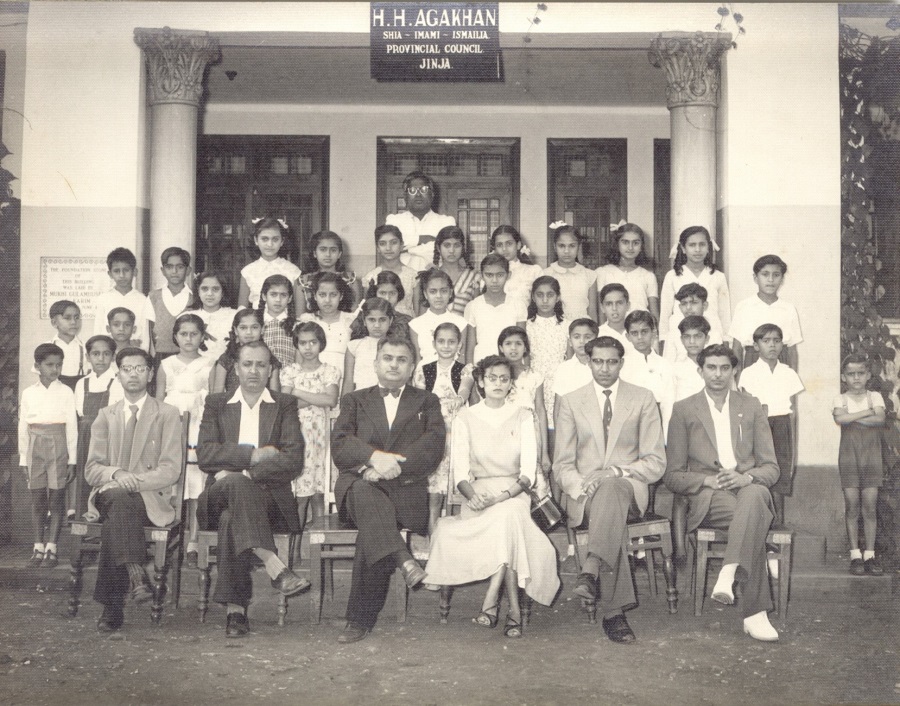
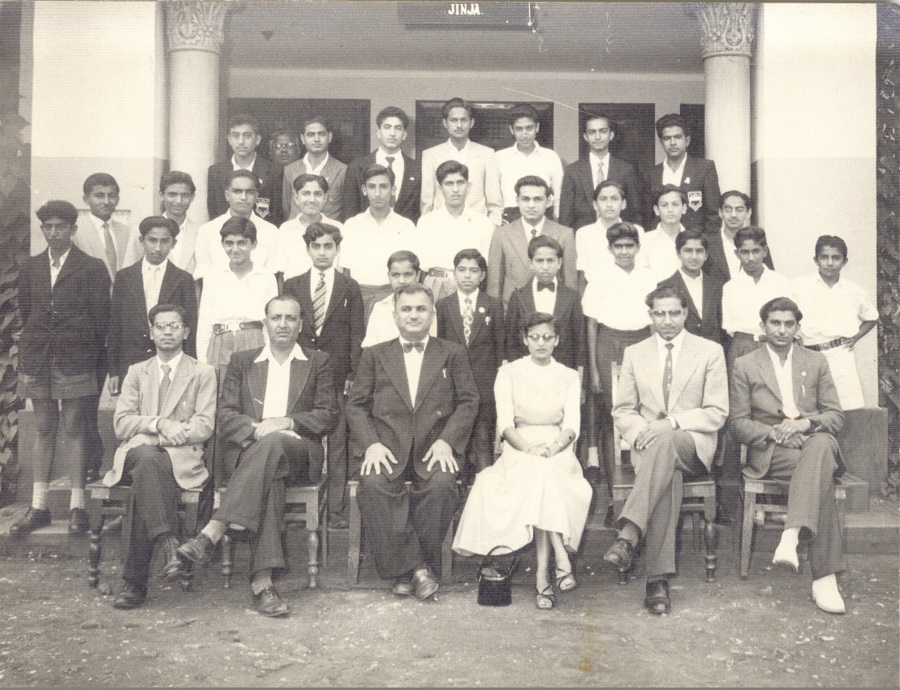
The three historic photos that are presented here may have volumes to speak about the individuals, with their own personal stories and experiences. Unfortunately, some may have passed away. Of course, individuals who can identify themselves or whose friends can identify for them are invited to present their names to Simerg@aol.com so that the captions may be updated. For now the captions in all the three photos only include the names of the office bearers seated on the front row with Alwaez Juma.
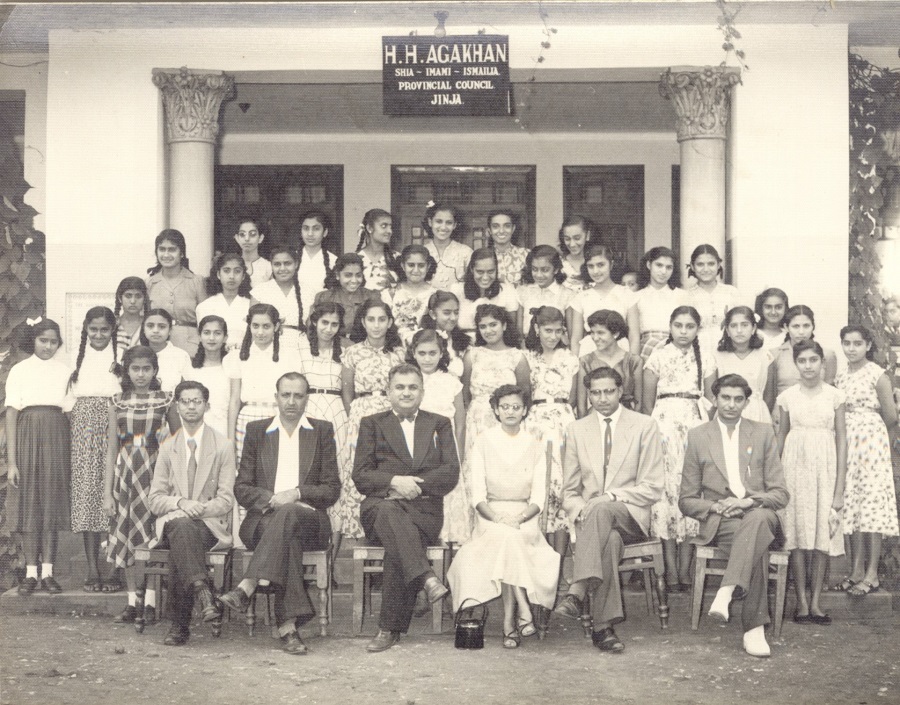
Dhanjibhai – Jinja’s Jamatbhai

A unique individual in two of the photographs shown above, is the unmistakable figure of Dhanjibhai, bespectacled standing behind the group. He was the Jamatbhai, the caretaker for the Jinja Jamat who took care of the day-to-day operation of the Jamatkhana: opening and closing the Jamatkhana, cleaning, making all the necessary arrangements, preparing tea on a sigri (charcoal burning stove) etc. He was the point man for getting anything done on the Jamatkhana premises and had the keys to all the rooms. He was also responsible for collecting Jamatkhana empty plates, bowls etc. from Ismaili households, going from house to house and putting them in a big raffia basket carried by an assistant. Dhanjibhai also delivered notifications to all those who had been given waras (assignments) to recite Du’a, Tasbih, Ginan etc. in Jamatkhana. The response for the acceptance or non-acceptance of the wara had to be given immediately and indicated on the wara card.
Dhanjibhai lived in a residence just next to the musafar khana with his wife, popularly known as maasi (aunty). In the evenings, maasi would prepare fried mogo (cassava) on a makaara (charcoal) burning sigri (stove) and was stationed near the back exit door. She would sell these mogo pieces inexpensively to supplement their meager income. There was chili, salt and a ambli (tamarind) sauce to go with the mogo which was a real treat. As youths, we would always look forward to this mouth-watering mogo after Jamatkhana, huddling near the parked cars on the street and socializing as we waited for our parents to come out of Jamatkhana.
Ismaili Institutions in Jinja
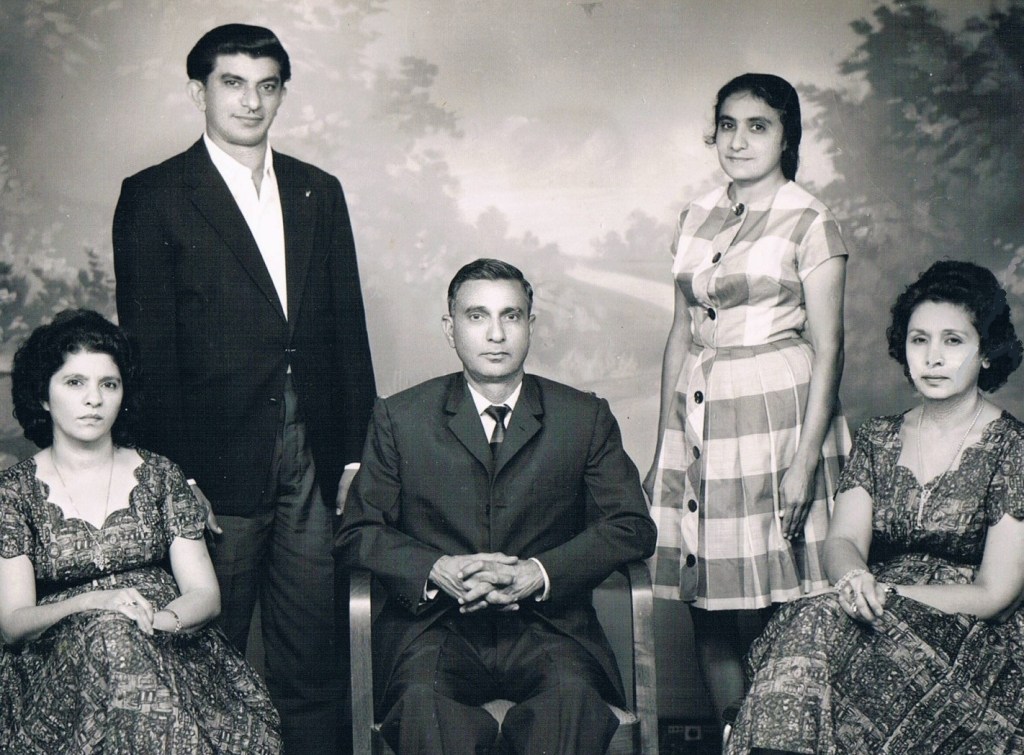
Inspite of the relative small size of the Jamat, Jinja was very well organized with a functioning Provincial Council, an Ismailia Association as well as numerous sub-committees to cater to the needs of different segments of the Jamat including women and youth. The Ismailia Association was primarily responsible for imparting religious education to members of the Jamat, arranging waezeen tours from time to time, selling religious books, making Farmans available, as well as ensuring that rites, rituals and religious ceremonies were being followed.
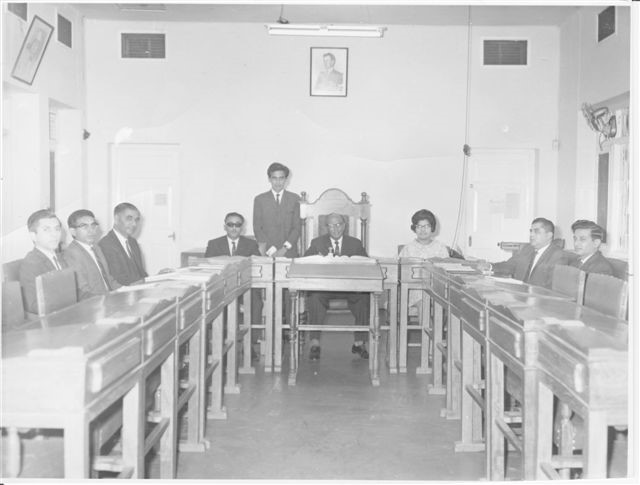
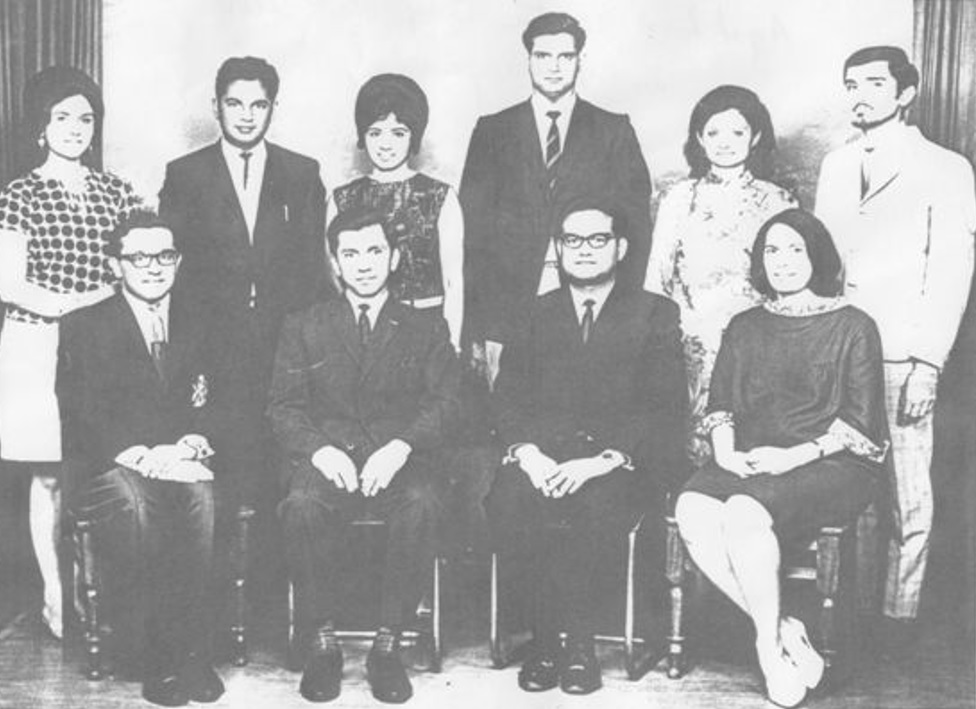
In sports, the youths of Jinja were very active in practically every sport, be it badminton, table tennis, volleyball and netball (equivalent to today’s basketball). Soccer and cricket were also played, though the playground was not large enough. Volleyball, traditional style, was played regularly, usually over the weekends. Of particular interest was the volleyball match played between married vs bachelors that took place once a year during one of the Khushialis. The match created quite a rivalry and was talked about for weeks afterwards.
At Khushialis, the whole playground was taken over with various activities, both for youths and adults. Starting with the flag raising ceremony, there were games and matches played. Usually the finals in sports such as table tennis were played on that day and trophies awarded to the winners. At lunch time there was sagridaam jaman (communal feast) when pillau (rice), cooked in a deg (large pot) was served in thalaas (large round trays) by the dynamic volunteer corps in full uniform. The Khushiali was a two-day weekend event with dandiya raas (Indian folk stick dance) and raas garba (circular folk dance) being played on Saturday until late at night with music provided by the Ismaili band.
Ismaili Business and Professional Activities in Jinja
Ismaili entrepreneurs were active in all spheres of business; Taxi & Car Rental (Hadi Jamal), Bus Company (Mohamed Mitha, Ibrahim Mohamed, Kassam Haji), Watches & Jewellery (Charanias), Insurance (Hussein Velji), Hotel Blue Cat (Abdul Devji), Restaurant & Bar (Sadru Hussein Rashid Khamis), Wholesale Clothing (Jeraj Sheriff), Portello Soda (Mohamed Remtulla), Pharmacy Retail (Jamal Govindji – Musa Diamond), Gifts (Madatali Hemani), Shoes (Sadru Bata), Molasses (Madatali Moolji), Bakery (Rahim Rajan), Butchery (Alaudin Kara) etc. to name just a few. There were also professionals such as Dr. Abdul Kassam Adatia, first Dean of Faculty of Dentistry at Bristol University (U.K) and visiting professor at Makerere University (Kampala), Yusuf Adatia (Architect) and secular school teachers, Ms. Malek Alarakhia, Ms. Gulzar Allidina and Ms. Gulshan Allidina, who appears in a very rare secondary school staff photo shown below. Indeed, generations of Ismaili students who attended the school will be able to relate to the photo, by recognizing some of their teachers.
Photo of Staff at Senior Secondary School in Jinja
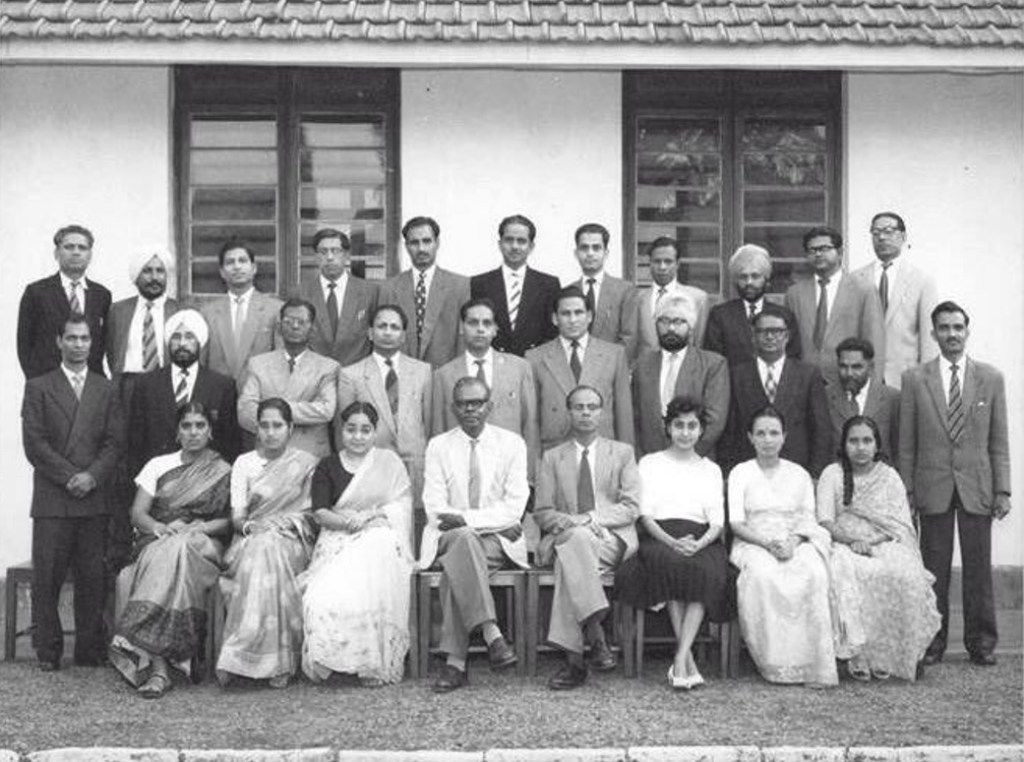
Visit by Mawlana Hazar Imam to Jinja in 1957
The Jinja Jamat was blessed with two visits by Mawlana Hazar Imam. The first one was in 1957, shortly after the Takhtnashini (ceremonial installation) on October 25, 1957 in Kampala, and the second took place in 1966, when Mawlana Hazar Imam made an extensive visit to East Africa.
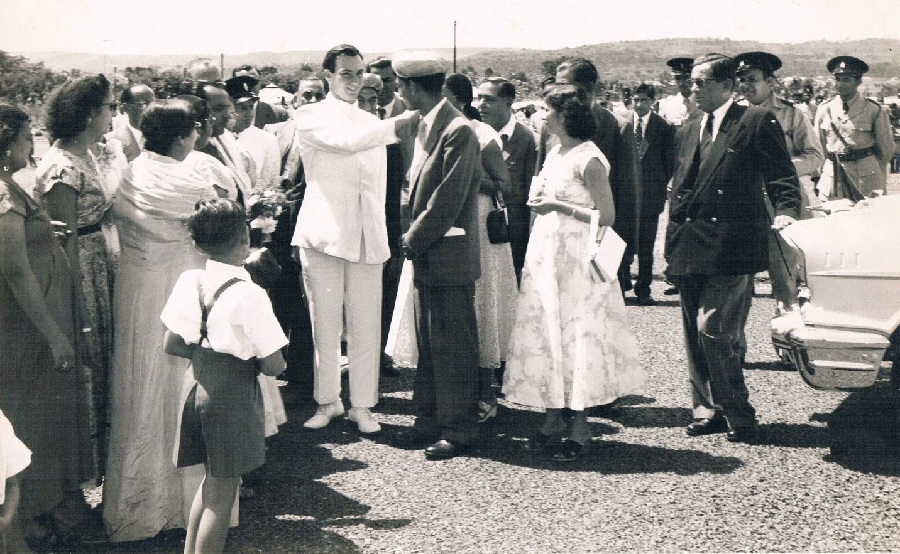
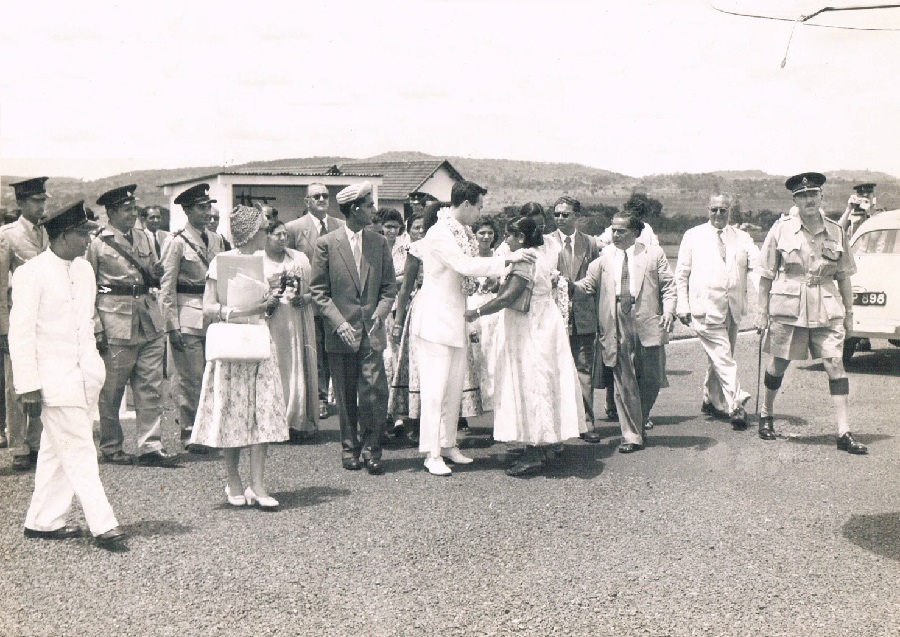
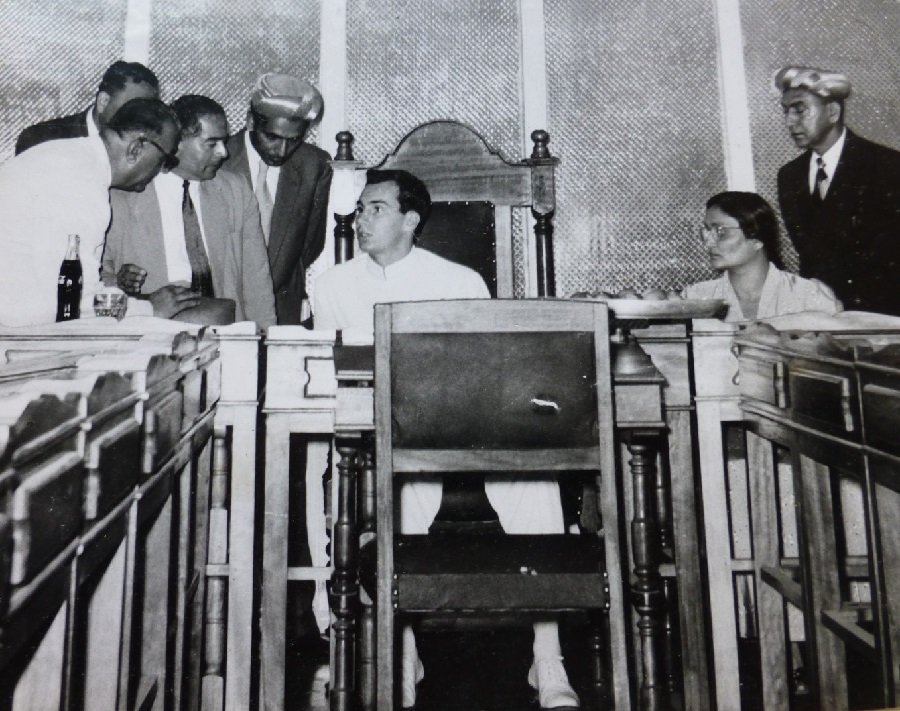
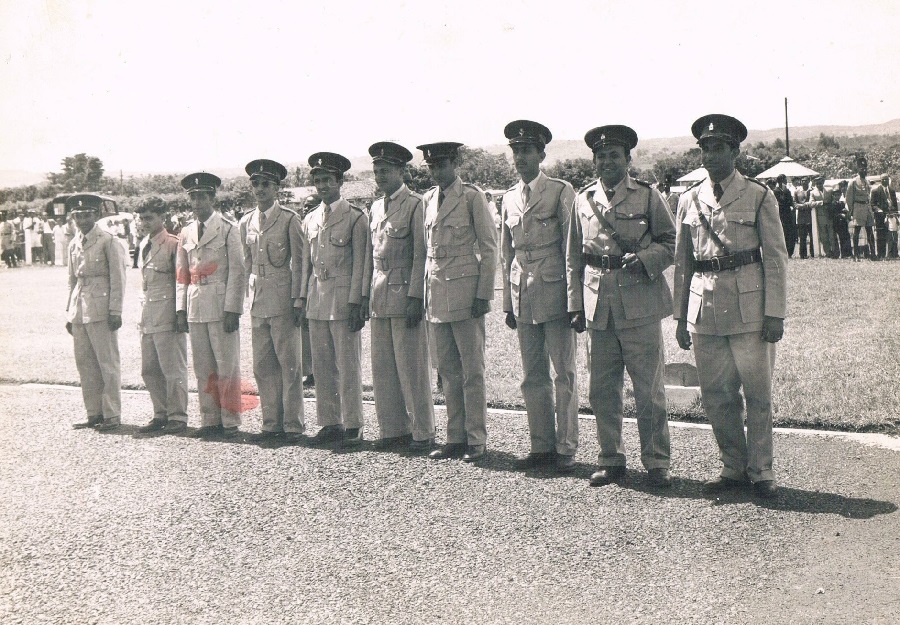
Visit by Mawlana Hazar Imam to Jinja in 1966
Mawlana Hazar Imam graced the Jinja Jamat with a second visit in 1966. The photos shown are also from our album. The first photo, though, where Hazar Imam is seen stepping down, is of his arrival at Entebbe Airport.
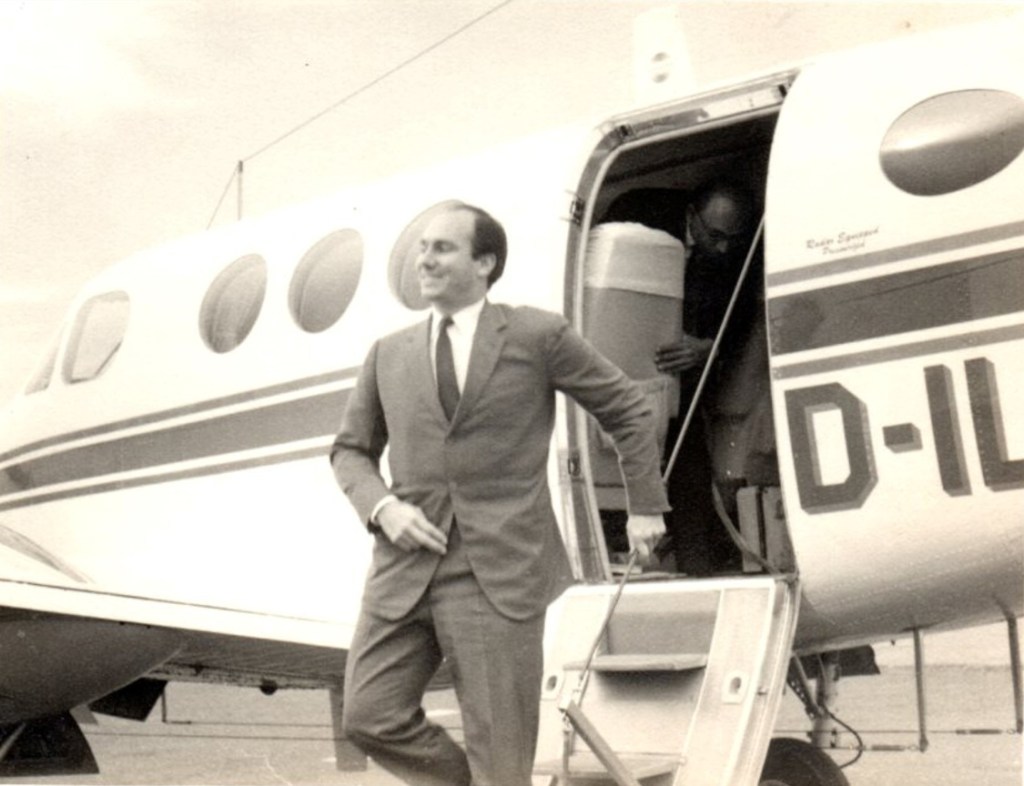
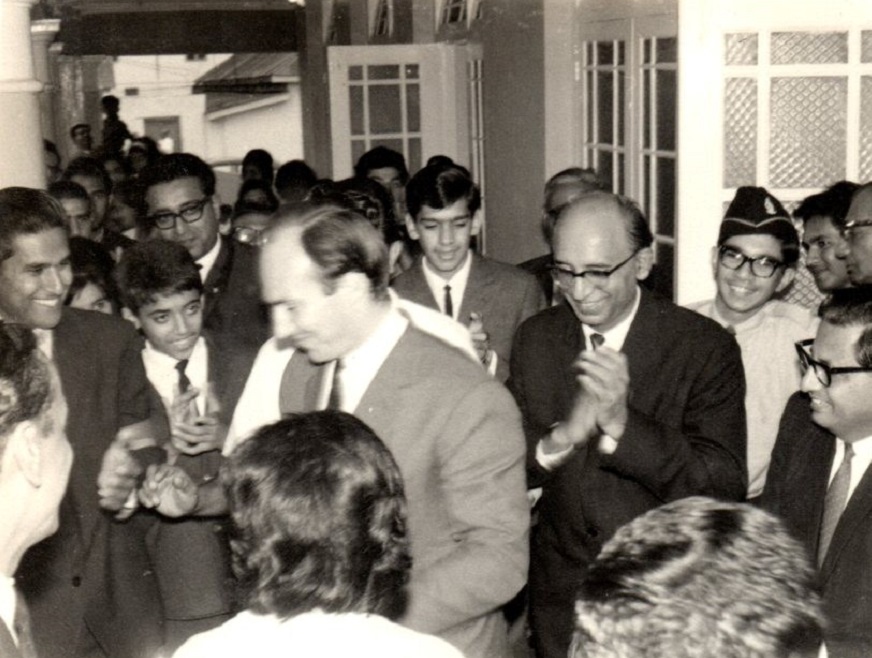
____________________
Conclusion
We trust that this short essay has served to provide some history of the Jinja Jamat from our perspective and in so doing, we have honored the memory of our beloved father. But by no means is it complete. There may be some minor errors that need to be corrected and some omissions and information gaps that need to be filled. We are sure that there is much more that others can contribute, and readers can do that by completing the comments box below.
After the 1972 Uganda crisis, when there was a mass exodus, the economy went down tremendously. But since then things have picked up particularly in Kampala, the capital, where there is lot of construction going on. A number of ex-Ugandans have returned and there is new immigration, mostly from India. There is lot of outside investment including by Hazar Imam, e.g Serena Hotel, Bujagali Falls Hydro-electric power station (in partnership between Aga Khan Fund for Economic Development or AKFED, Sithe Global Power of USA, Government of Uganda, Industrial Promotion Services, IPS, and Jubilee Investment Company).
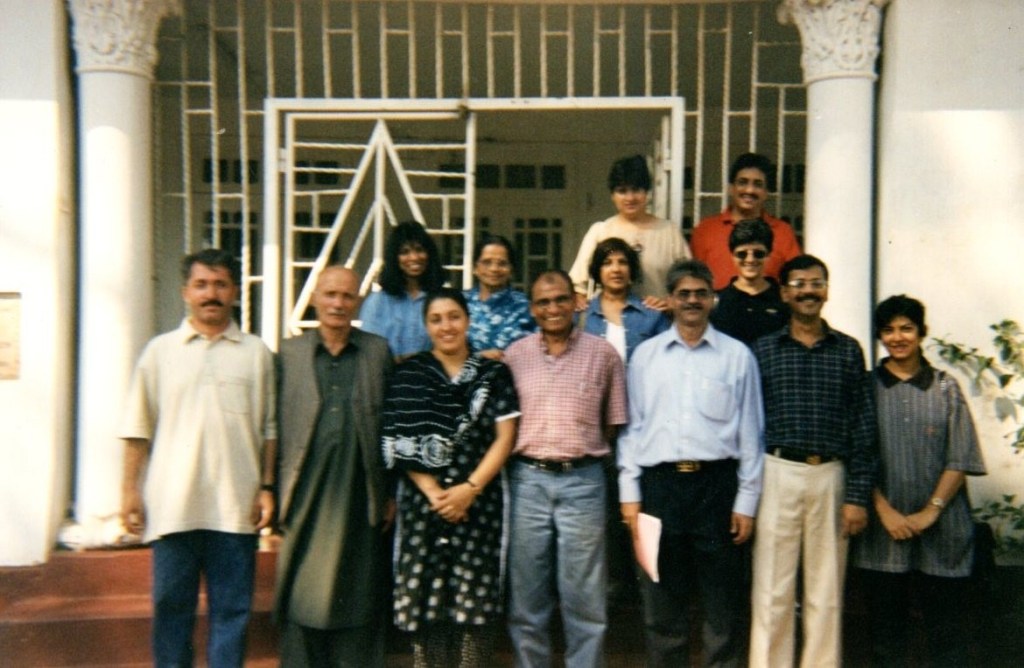
The economy in Jinja is still depressed with abandoned buildings and buildings in a state of disrepair. The historic Jamatkhana building still stands but there is now a clinic there. The small Jamat that is there, mostly from India, meets for Jamatkhana in the Council Chamber/Office building (see photo, above).
Let us hope and pray that the beautiful city of Jinja, once the industrial hub of Uganda, prospers and blossoms to its days of past glory and become the dynamic and vibrant city that it once was.
_____________________
A Tribute to Our Late Father, Gulamali Kara Somani
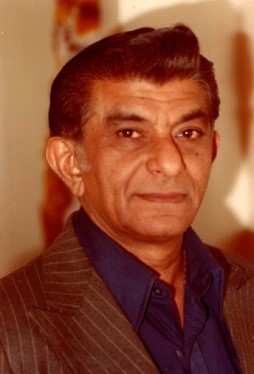
The history of Jinja Jamat and the pictures that we have shared with readers with Simerg are a testimony of our father’s love for Mawlana Hazar Imam and his Jamat. He preserved these photos in our family album for more than 62 years. We wish to pay him our humble tribute.
Our loving father, Gulamali Kara Somani, was born in 1924 in Jinja, He lost both his parents when he was just 8 years old. He was brought up by his uncle and, like many from his generation, he set up shop and started to do business after finishing school. He was always mechanically inclined, fixing things, be it cars, bicycles etc. and was always very creative. For example, he could take a black & white picture and color it using photo tints. (There were no colored pictures at the time). He also developed his own pictures at home. Music was his passion. He started writing and composing songs and played them on a musical stringed instrument of Japanese origin called Taishokoto.
Then he got into repairing watches and got very good at it, a skill that he practiced till his last days. He could pull apart a watch completely, clean the parts, oil them and put them back together for perfect timing. It was this skill that landed him a job in Montreal when he applied to come to Canada. His mind worked on small, intricate details which is why he was very successful in fixing things or creating works of art. At Jamatkhana, when they needed something decorative to be prepared, they knew that they could count on him for something original and he never let them down.
In the 50s and 60s his services were called upon to teach in the religious night school at Jinja to students from junior level to senior secondary level covering all subjects: Du’a and its meanings, Ginans, History of the Imams, Farmans etc. We remember that at one time during a wa’ez competition he wrote a wa’ez in English for us on the subject of: “Education”.
He also served as a senior volunteer (Lieutenant: the highest ranking officer) rendering exceptional services along with other volunteers particularly during Hazar Imam’s two visits to Jinja. We remember seeing him with burn-bubbles on his hands from serving hot, steaming pillau (rice) from the deg (large pot). When he presented himself for Mehmani to Hazar Imam, Hazar Imam blessed him and mentioned: “Good service!”
He was also a member of the Ismaili Band that provided music for dandiya raas and garba during the Khushiali celebrations.
In 1966 when Hazar Imam visited Uganda, there was a small town named Mbale in Eastern Uganda, on his itinerary (see Uganda map on top of page). Mr. Hadi Jamal of Jinja provided a fleet of cars for Hazar Imam’s staff to travel to Mbale. Our father volunteered to drive one of the cars and was assigned Hazar Imam’s photographer, which was great because he could go everywhere where Hazar Imam went. At one point, Hazar Imam was at a reception and was drinking Coca-Cola from a glass. Our father did not take his eyes off this glass. As soon as Hazar Imam kept his glass on the table and started to leave, our father made a beeline for the glass, picked it up, and then took the glass with him. We still have this glass in our possession which our father preciously guarded and brought it with him to Canada.
A teacher, a volunteer par excellence and above all, a humanitarian, our father served with utmost distinction and dedication, never seeking recognition. His outstanding and exemplary services are truly worthy of admiration and emulation and rubbed off on of us, his children, who have served in various capacities over the years in Jamati institutions.
Our younger sister, Shams, a secular teacher, took one year out of her teaching profession to work as a volunteer with Aga Khan Education Services (AKES) in Kampala from 1999 to 2000. Both our sisters, Layla and Shams were also heavily involved in BUI (Bait-ul Ilm) and have continued to play a role in imparting religious education for many years now. I, Salim Somani, served in various Majalis as Mukhi and Kamadia, in committees (audio visual, catering etc.) and also as a volunteer. My brother Sultan Somani, the co-author with me on this Jinja piece, served as Chairman of Ismailia Association (6 years), as Hon. Secretary on the Aga Khan Council for Quebec & The Maritime Provinces (6 years), Member and Chairman, Conciliation and Arbitration Board (6 years), and as Majlis Mukhi (3 years), among other duties etc.
Never missing a day, except for health reasons, our father attended Jamatkhana everyday in the morning and evening, no matter what the weather was like. We have seen him bundle up and walk to Jamatkhana when it was extremely cold.
Our beloved father passed away in April 2010 at the age of 86.
We pray that may Allah in His Infinite Grace and Mercy forgive all his sins and rest his soul in eternal peace – Amen.
Story Copyright: © Salim and Sultan Somani.
Date posted: July 31, 2020.
Last updated: August 12, 2020 (caption updates with name of person(s) as they become available, and typos).
CORRECTIONS:
(1) In the original version of this piece, the year 1958 was mentioned as Mawlana Hazar Imam’s first visit to Jinja, Uganda. Actually, the visit took place in 1957, shortly after Mawlana Hazar Imam’s enthronement (Takhtnashini) ceremony in Kampala on October 25, 1957. The article has been updated with the correct year (correction made on August 9, 2020).
(2) Earlier versions of this piece mentioned that Mawlana Hazar Imam travelled by car to towns outside Kampala, such as Jinja and Mbale. Our attention has been drawn to the fact that in 1957, Mawlana Hazar arrived in Jinja by plane, where there was an airfield available for the landing of military aircraft as well as some civilian planes. We have updated our captions of the 1957 visit to reflect this (correction made on August 10, 2020).
Before departing this website please take a moment to review Simerg’s Table of Contents for links to hundreds of thought provoking pieces on a vast array of subjects including faith and culture, history and philosophy, and arts and letters to name a few.
Please report typo or error in story to Simerg@aol.com.
___________________
We welcome your feedback/letters on this special piece on Jinja by clicking on Leave a comment or writing to the editor, Malik Merchant, at Simerg@aol.com. If you were a Jinja resident, your reminiscences about life in Jinja, your participation as a student, a volunteer, a leader or a member of the Jinja Jamat, as well your surprising anecdotes will uncover a wealth of information about Jinja. We also welcome historical photographs of Mawlana Hazar Imam’s visit to Jinja. Kindly note that your feedback may be edited for length and brevity, and is subject to moderation. We are unable to acknowledge unpublished letters.
____________________
About the Authors
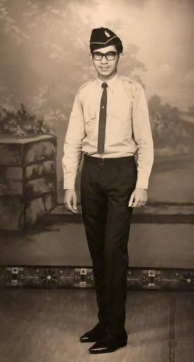
The authors of this article, Salim and Sultan Somani, were both born in Jinja, Uganda and now reside in Montreal, Quebec.
Salim immigrated to Canada in 1974 from England where he pursued his studies in Hotel Management & Catering at Huddersfield Polytechnic and specialized in cuisine. Unable to return to Uganda, following the 1972 expulsion of Asians, Salim moved to join his parents in Montreal where over the years he applied his culinary skills at a number of prestigious places, including the Ritz Carlton, Bonaventure Hilton and Montreal Casino in different cuisines. Most recently he worked at the renowned catering company, La Maison Carrier-Besson.
He is married to Rashida and has a son, Hussein, a National Account Executive with RGIS and a daughter, Aliya, Educational Consultant with EMSB (English Montreal School Board). Salim is now retired.
In recent years, Salim has started carving fruits, particularly watermelons, and his impressive work has resulted in him being invited to carve fruits for several important festivals and ceremonial occasions.

Salim’s brother, Sultan, immigrated to Canada in 1973. He was studying Physics/Mathematics at Makerere University, and 3 months before writing his final exams, he was in the unfortunate position of having to leave Uganda due to Idi Amin’s expulsion orders. He proceeded to Nairobi, Kenya, and with the assistance of the United Nations High Commission for Refugees, under the leadership of late Prince Sadruddin Aga Khan, was moved to a refugee camp in Italy where he stayed for 5 months. He then joined his parents in Montreal, where he studied computer science in a university before commencing a career as a systems analyst and programmer at Bell Canada’s Behavioural Sciences Group, Comptrollers Results Department and Corporate Systems Organization (CSO).
Sultan later diversified into a number of businesses in partnership. He has for years dedicated his time to serving Ismaili Institutions in numerous capacities and the Ismaili community in general, for which the title of Rai was bestowed on him. He is now retired, and at the age of 70 is a father of 6 year old daughter, Sarah, whom he takes care of on a full-time basis with his wife, Shainaze.
________________________
The authors recommend the website Sikh Heritage for more information and photos of Jinja.


What a great information and memories combined. Thanks so much. I have not seen much talked about my grandfather Rahim Rajan.
Hi there,
I am interested in finding out some more history about Jinja and Kampala as my fore fathers and my father in laws family are both from this area.
You mention a person Suleman Esmail who I want to find out more about as it is the name of my great grandfather who also arrived in East Africa within this time frame.
Please let me know if you have any questions and feel free to contact me.
We, Salim & Sultan Somani like to thank Mr. Malik Merchant , who without any hesitation agreed to publish our write up on the history of the Ismaili jamat from Jinja. At the same time we have had an overwhelming response from friends and family members. Please continue to share and if you wish, leave comments at the end.
Thank you so much for this great information and photos about Jinja! #visitjinja #historicaljinja #,jinjaheritage.
Dear Salim and Sultan. Mubaraki. What an amazing history of Jinja Jamat and Jamatkhana (JK). I lived in Jinja from 1970 to 1972 and have fond memories of Masi and the mogo, and also Dhanjibhai. I also remember mission class and our Rozy madam who now goes to our Northwest JK in London. I also remember your dad Gulamali uncle and his shop near the post office end of Main Street.
Khushiali in Jinja was great fun with dandia rass, variety shows, fancy dress, games, march past , volleyball and table tennis tournaments. Happy memories. Thanks for sharing these amazing memories and history of Jinja. May your father’s soul rest in eternal peace and all those wonderful people of our Jinja jamat who are now in Mawla’s spiritual presence. Ameen
Hussein Allidina
Congratulations and many thanks for your efforts to prepare this wonderful narrative. I was wondering why the last visit of Hazar Imam to Jinja in February, 1972 is not mentioned.
I have got some pictures and articles of that visit. If you want I can send them to you.
S.M.Mitha
Thank you for your feedback. I have just responded to you via email with regard to the report and photos of Mawlana Hazar Imam’s visit to Jinja in 1972. Please check your email box.
Malik Merchant
editor
http://www.simerg.com
simerg@aol.com
Wonderful article and well researched with beautiful pictures.
Amazing article, lots of effort and memories!
Great service to family and community for preserving these memories here, important to do as not just memories of times gone by but a country gone from us with the 1972 expulsion. We have a duty to remember those times. I could recognize many names here – the Adatia brothers architect and dentist, Mohamed Mitha (Eastern Province Bus Company), the Diamond Bottlers Vimto. Al-waez Gulamhussein Jumma lives in the memories of Kampala jamat as the itinerant missionary who sojourned at the musafarkhana on the Jamatkhana compound. For us Kampala people, Jinja was a must stopover to bring back farsan from the store there. I have a section on Jinja in my book Uganda Asians and MAY import from here with the authors’ permission.
I enjoyed reading the old good days in Jinja. I was also in the same camp in Italy.
I am writing to say thank you for bringing all these memories. It gave me immense happiness to see me mentioned in the caption of the 1966 photo where Mawlana Hazar Imam is seen leaving the Council Chamber. Your father’s collection is priceless. I remember Mr. Kara, as I used to come to the shop with my elder brother Zahir for the footbal pool and for watch repairs. I am fortunate to know Salim and Sultan, with whom I used to discuss faith matters. I pray for the eternal rest and peace of all souls.
The comments in this article about Jinja Jamatkhana (JK) reminded me of a hitch hiking trip I took from Nairobi to Kampala, in the early 1970’s. We arrived in Jinja fairly late in the evening, and as it was getting dark fast (we were now almost by the Equator, where the Days and Nights are almost of equal 12 hours length). So we went to the JK and I remember the elders were kind of angry at us, seeing us as reckless young boys, hitch hiking through a dangerous Uganda. They told us to spend the night at the JK compound for which we were grateful. It was an interesting experience as teenagers.
On another note, the article has a reference to a Varasianima Virbai, widow of late Mr. Ali Bandali. A few years ago when I visited Tanzania, and I had researched by grandfather’s, the late Suleman Dharsee and his arrival to Tanganyika, and to the town of Dodoma, sometime in the 1920’s. As part of this research, another story I had come across was that a sister of my grandfather, named Virbai, had migrated to Uganda, from Kutch in India, a few years earlier and that they had lost contact for many years until they visited each other after independence. Her maiden name would have been Virbai Dharsee Manji.
I was wondering if the Varasianima Virbai noted in the article is the same lady as my grandfather’s sister? Would the authors or any former Ismaili residents of Jinja or any other readers of this article recall the maiden name and/or maternal family heritage of Varasianima Virbai?
Thank you
Zahir Dharsee
Sultan and Salim: My name is Abdul Allibhai. We were friends in Jinja. My father’s name was Noordin Allibhai and mum was Dolubai.
Thank you for this excellent article. I knew your father very well. He was a great man; may his soul rest in peace.
Lovely walk down memory lane. It was great to catch a glimpse of my uncle and my Masi in their younger days as well as friends of my mum and dad. Great work.
Salim and Sultan: I must commend you for the write up on Jinja, a place I was not familiar about – I had heard about it, and that’s all. I wonder how many small town or village stories we have from around the world that can be shared like how you have described Jinja. Of course it remains for the youth of the community to take interest and seek out details from their parents and grandparents before those memories are gone for ever. Congratulations on your effort.
Dear Sultan & Salim,
A well written muse on Jinja. Although I grew up in Masaka around the same time, I fondly remember the school trips to Jinja to see the Owen Falls Dam.
We both live in Montréal today and I don’t think I would have known so much about your Dad and our community’s presence if I hadn’t read this very amazing memory trip. Thanks so much for sharing. Your dad was an amazing individual, simple, generous and humble. Many a times he had repaired many of my time pieces.
May his soul rest in eternal peace.🙏
Amazing writing and photo collection. Sultan my partner in crime at Makerere University and kind and caring friend in Montreal before I moved to Seattle. Take care and Idd greetings from Seattle.
Bravo, Salim and Sultan Somani! You have made a valuable contribution to our collective Khoja Ismaili history. May ‘Sir’ continue to rest in amar shaanti, Ameen.
Zahir K. Dhalla,
Author, “Nine Ginans of Nine Ismaili Pirs: A Brief History of Khoja Ismailis”
(https://www.amazon.ca/dp/B00TCZBZWQ)